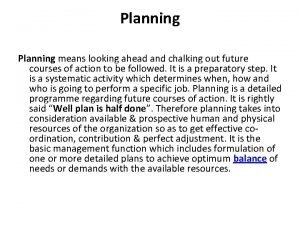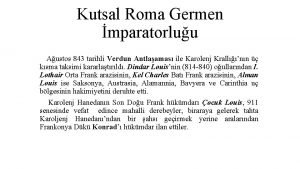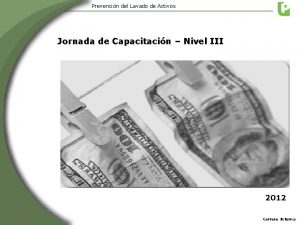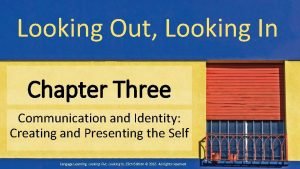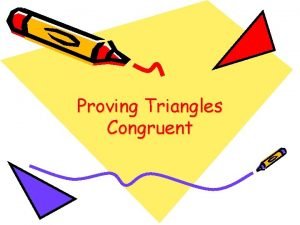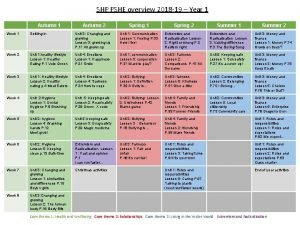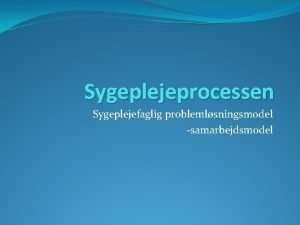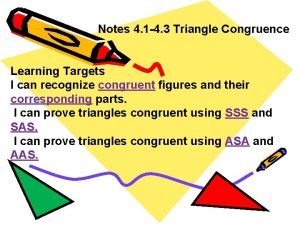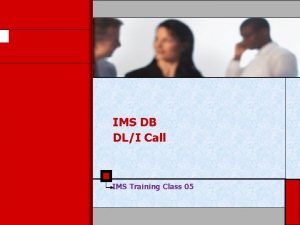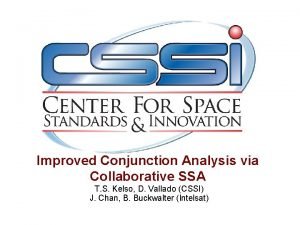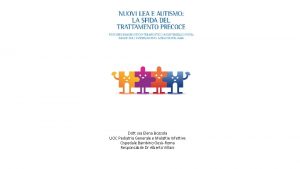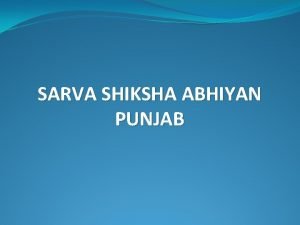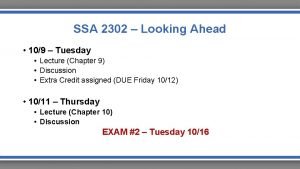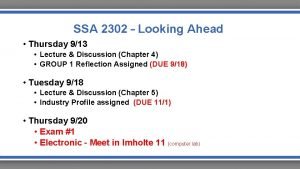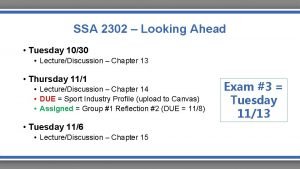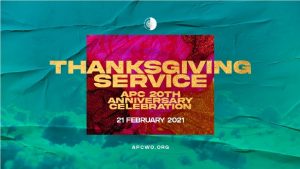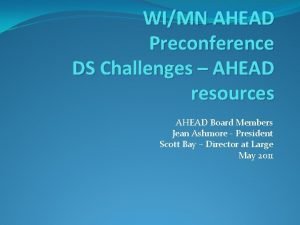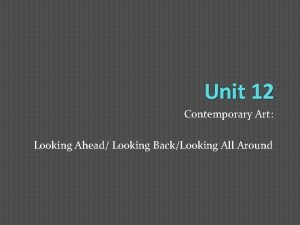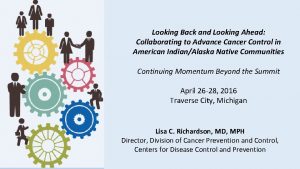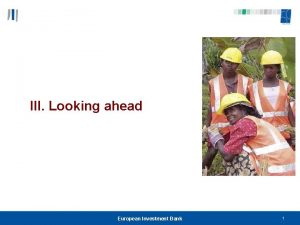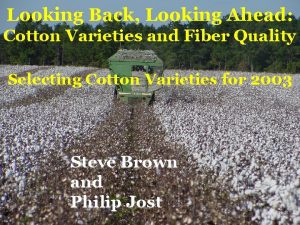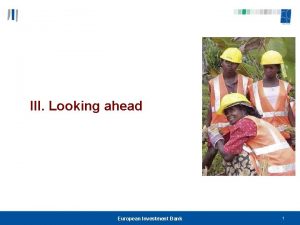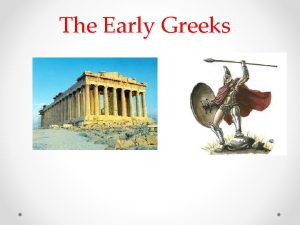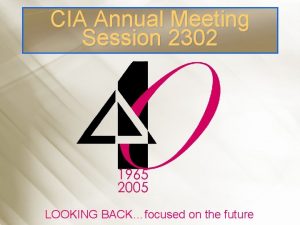SSA 2302 Looking Ahead Tuesday 918 Lecture Discussion
























- Slides: 24

SSA 2302 – Looking Ahead • Tuesday 9/18 • Lecture & Discussion (Chapter 5) • Group 1 Reflection DUE (turn in on the front desk) • Industry Profile assigned (DUE 11/1) • Thursday 9/20 • Exam #1 • Electronic – Meet in Imholte 11 • • Exam begins promptly at 9: 50 am (full class time available to complete) Upon arrival, sign in to your personal account to get to Canvas Log-in for the exam in Canvas will be provided upon arrival No notes/books/phones are allowed on the tables

CHAPTER 5 Managing and Leading in Sport Organizations Shannon Kerwin, Ming Li, and Laura J. Burton

Theoretical Approaches to Management Vocab: • Management: the process of working with and through individuals and groups to accomplish organizational goals • Types of theoretical approaches to managing people: • Scientific management approach • Pay/working conditions most effective towards performance; Increase workers’ outputs • Human relations management approach • Workers who feel important are more productive; Manager’s concern for employees would lead to higher rates of job satisfaction • Process (administrative) management approach • Focuses on managing the organization as a whole entity

Management Functions • Underlying processes of management (human relations management approach) • Planning: developing objectives • Typically where the management process starts. • Organizing: arranging resources • Staffing: recruiting/training employees • Directing: influencing members to be efficient/effective • Controlling and evaluating: are employees on task/making progress? • Typically where the management process concludes. *Decision-making is the element common to ALL functions.

The Functions of Management

Classifications of Managers • Top-level managers • Executive; Senior-level; Most power/authority • Middle-level managers • Administrative; Selected by/accountable to top-level; Must be both leaders and followers • Supervisory-level managers • First-line; Manage operative employees; Contact between operatives (technical specialists) and mid-level; Least amount of authority; Responsible for a single area/specific tasks • See table 5. 2 for examples of titles of managers

Managerial Skills • Conceptual • Ability to see the organization as a whole; Analytical, creative, initiative; Necessary for top-level managers • Human relations • Ability to work with people; Communication/listening skills required; See this among successful managers at all levels • Technical • Can perform specific job tasks; Typically trained in specific skills (e. g. computer tech, etc. ); Most visible among supervisory-level managers • Table 5. 3 shows how managerial skills link to levels of management

Leadership Vocab Leadership: Process of influencing the activities of an individual or group in an effort to achieve a goal in a given situation • Leaders vs. Managers • Both involve working with people; Managers can lead; Leadership is broader than management; Leaders do not need to be managers • Not the same in the ways they accomplish objectives • Managers: focused on efficiency and doing things right; Cope with complexity in the workplace (planning, organizing, controlling) • Leaders: focused on effectiveness and doing the right things; Cope with change in the workplace (setting direction, aligning people, motivating/inspiring) Table 5. 4

Servant leaders share power, put the needs of others first, and help people develop and perform at the highest levels possible. They lead with others in mind while cultivating a culture of trust.

Contingency Theory of Leadership • Multidimensional leadership model (Fiedler, 1963) • The most effective style of leadership depends on the situation (context). • Leadership is multi-dimensional and includes: • Leader’s traits, power/influence, goals • Follower’s expectations and values • Leadership context defined by: • Organizational complexity (size of the organization) • Task uncertainty (routine/repetitive vs. innovative/novel)

Contingency Theory: Leaders • Within Contingency Theory, leaders: • Are responsible for introducing and managing change • Possess power to ensure buy-in/commitment to change • Have a goal to influence others to follow her/him on a path that leads to achieving goals/objectives

Contingency Theory: Followers • Followers are considered subordinates • Vital to the change process • Alignment between the follower’s expectations and values and the leader’s goals significantly influence the effectiveness of the change process

Contingency Theory: Context • Organizational complexity and task uncertainty will guide the leadership style that is most appropriate (and effective) when it comes to coping with change Vocab: • Organizational complexity: size of the organization or group within which leaders and followers operate, and the location of the workspace; Larger the organization = the larger number leader/follower goals/expectations to manage; Multiple locations makes the challenge greater • Task uncertainty: contextual factor that influences leader ability to cope with change in their organization; Tasks can be certain (routine) to uncertain (novel, nonrepetitive) • Directive leadership: employees have little input into decision-making • Participative leadership: leaders seek employee involvement in planning/decision-making

Interactive Process of Contingency Theory Leadership

Leadership Styles Studies on leadership have identified: • Traits held by leaders: • Honesty, integrity, self-confidence • Behaviors of leaders: • Centered on tasks (technical aspects of the job) and/or employees (interpersonal relations; meeting followers’ needs) • Situations: • Different situations call for different leadership styles

Contemporary Approach to Leadership • Transactional leadership • Lead through reward/punishment; Reinforcement of behaviors • Nontransactional: laissez-faire leadership • Passive leadership; Neither monitor nor correct; Least effective • Transformational leadership • Trustworthy, encouraging, risk-taking, considerate; Put organizational interests above personal interests; Influential, motivational

Decision Making, Authority, and Power • Steps in decision making • • • Defining and framing the problem Identifying criteria for decision Developing and evaluating alternatives Selecting an alternative Implementing the alternative Evaluating the effectiveness of the decision (continued)

Decision Making, Authority, and Power (continued) • Authority: • Power to enforce rules and to expect subordination from those who have no authority; Those with legitimate power also have authority • Power: • Often perceived at the individual among those that have power through various sources (e. g. position, personality, resources) that can be exercised in decision-making processes

Sources of Power • Legitimate or Positional power • Position occupied within the organization; Associated with hierarchy • Reward power • Position that provides rewards for performance • Coercive power • Provides sanctions, punishments, threats; Often perceived as problematic • Referent power • Based upon perception (i. e. charisma, charm, appeal) • Expert power • Knowledge and skills deemed valuable • Information • Access to information (not expertise)

Organizational Diversity • A diverse workforce can better respond to consumers’ needs and can improve organizational effectiveness • Studies indicate that a diverse work environment also increases employee engagement, performance and satisfaction Improve organizational diversity: 1. Governance – revisit mission statement; do by-laws refer to inclusion 2. Strategic Planning – identify issues; track trends; strengthen management commitment 3. Communication & Promotion: build awareness 4. Membership Involvement: infuse diversity into management culture

Strategies to Manage Organizational Diversity • Four categories proposed by Fink and Pastore (1999) 1. Noncompliant 2. Compliant 3. Reactive 4. Proactive • Studies suggest that diversity can promote the success of sport organizations

Keys to Support Inclusive Diversity Practices • Presence of change teams • Education • Top management support • Systematic integration

Practical Application – Class Activity 1. Utilizing the Management Functions (below), create an outline that briefly details each of these areas regarding what you need to consider in preparing this proposal. 2. Next, select one decision that you might need to make within your outline and provide detailed information regarding how you will approach developing and evaluating that decision using the decision-making steps.

Review Questions • What are three theoretical approaches to management and managing people in sport organizations? • What are the differences between power, authority, and leadership? Provide an example of each. • How can diversity enrich the operations and effectiveness of sport organizations?
 Planning is looking
Planning is looking 918 saksonya dükü
918 saksonya dükü Decreto 918/2012
Decreto 918/2012 Looking out looking in summary
Looking out looking in summary Looking out looking in chapter 9
Looking out looking in chapter 9 01:640:244 lecture notes - lecture 15: plat, idah, farad
01:640:244 lecture notes - lecture 15: plat, idah, farad Fractional distillation conclusion
Fractional distillation conclusion Ssa postulate
Ssa postulate Pshe ssa
Pshe ssa Monika hengge
Monika hengge Sygeplejeprocessen model
Sygeplejeprocessen model Ssa math
Ssa math Dott.ssa lucia lospalluti
Dott.ssa lucia lospalluti Dott ssa piccinni endocrinologa
Dott ssa piccinni endocrinologa Form ssa-1694
Form ssa-1694 Qualified ssa in ims
Qualified ssa in ims Ssa ts
Ssa ts Ssa cursos e notas
Ssa cursos e notas Dott ssa elena bozzola
Dott ssa elena bozzola Dott.ssa elisabetta cerboni
Dott.ssa elisabetta cerboni Oberschulamt ludwigsburg
Oberschulamt ludwigsburg Chiara giugliano
Chiara giugliano Dott.ssa deutsch
Dott.ssa deutsch Dott ssa guetta milano
Dott ssa guetta milano Present status of ssa in punjab
Present status of ssa in punjab
